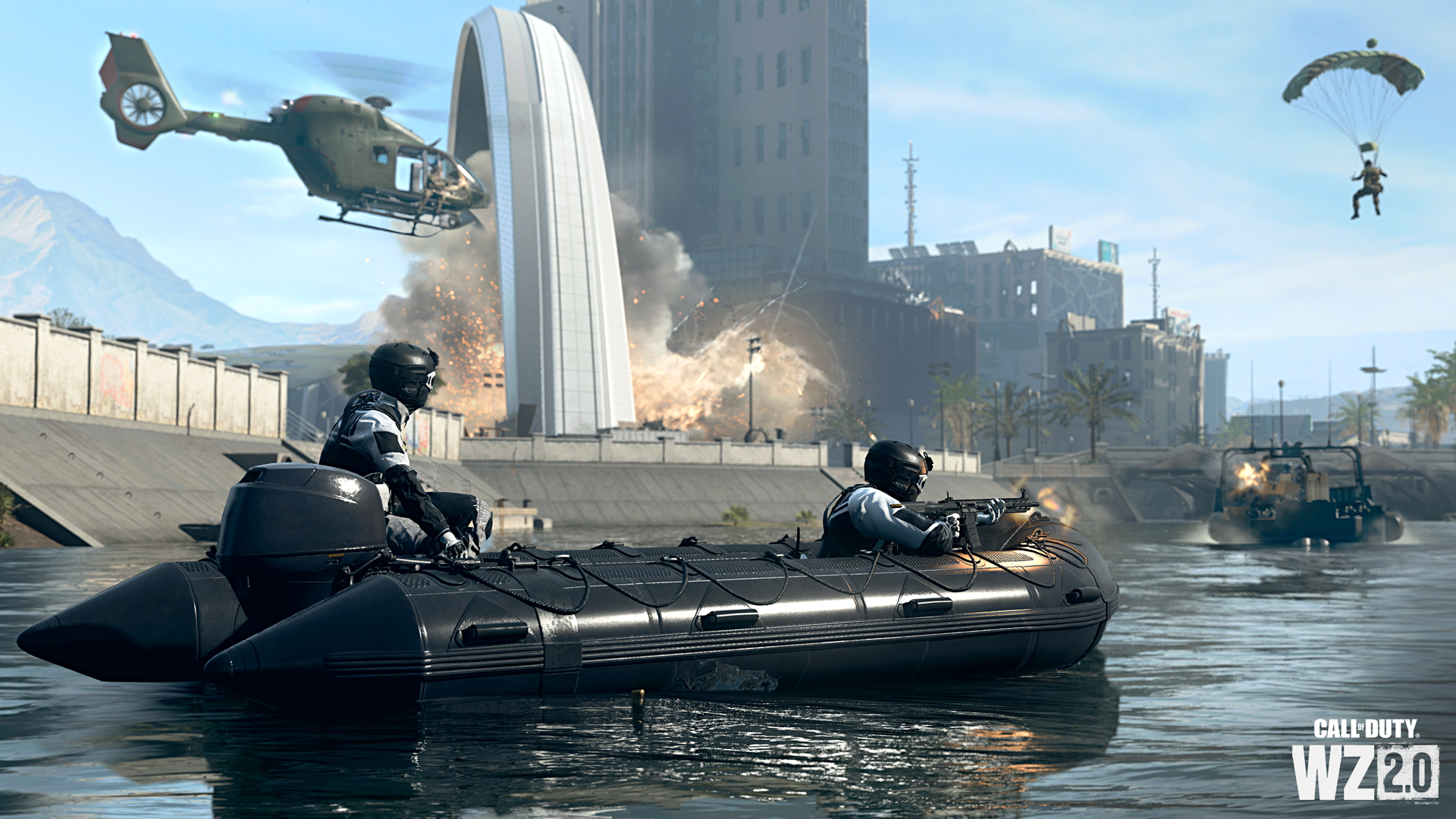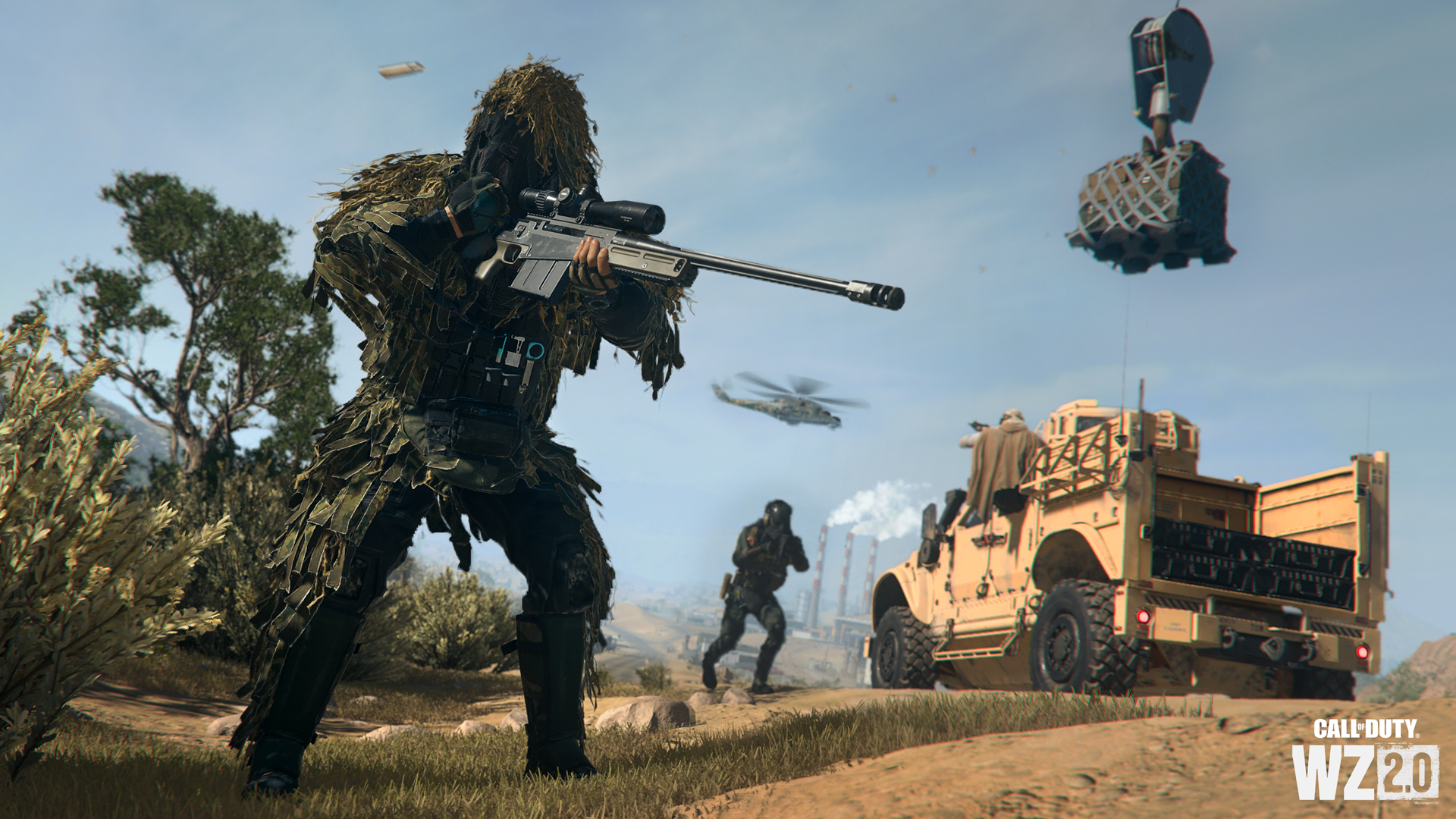When it comes to battle royales, I’m far from an expert. Don’t get me wrong, I’ve played an absurd number of battle royales, constantly hoping that one of them would click for me and I’d get sucked into the genre like most other gamers seemingly do, but alas, even when taking the original Call of Duty: Warzone into account, the closest I really got to truly enjoying a battle royale was Apex Legends. Well, Call of Duty: Warzone 2.0 is out, and having played quite a bit of it, I sense a change in the winds approaching.
Let’s get the most basic things out of the way; when it comes to being titled Warzone 2.0, you’d actually be surprised at how little has changed in the transition from the original Call of Duty: Warzone. I’m sure several weapons and items have seen changes, both sweeping and minor, and the map is certainly new, but for all intents and purposes, Call of Duty: Warzone 2.0 is an iterative sequel. It’s not as sweeping a transition as the original Warzone was from Call of Duty’s first attempt at a battle royale in the form of Call of Duty: Black Ops 4’s Blackout.
Being iterative is hardly a bad thing, however, and Call of Duty: Warzone 2.0 quite easily proves as evidence to this fact. Numerous studios worked on the game, and the pedigree and experience of these developers definitely shows. Call of Duty: Warzone 2.0 has also quite clearly seen what other battle royales have been doing, and is more than happy to adapt some of the best ideas from the genre.
But first, I’d like to talk about the biggest new addition to Call of Duty: Warzone 2.0—its new DMZ mode. Sitting in the same genre as Escape from Tarkov or Hunt: Showdown, Warzone 2.0’s DMZ mode acts as more of a co-op experience with some light PvP elements, rather than being an outright PvP game like its main battle royale counterpart.

“Call of Duty: Warzone 2.0 has also quite clearly seen what other battle royales have been doing, and is more than happy to adapt some of the best ideas from the genre.”
The concept behind DMZ is simple: you, either solo or as part of a squad, drop down into the battle royale map to complete objectives. These objectives range from simple things, like looting a certain number of containers, to more complicated affairs, like having to find a new weapon blueprint. The twist is that you and your squad also have to escape from the map to claim your bounty. While completed objectives and the experience you earn by fighting enemies—both AI-controlled as well as other players—still counts, you won’t get to keep any of your sweet loot if you don’t escape.
What sets DMZ apart from the battle royale, aside from the presence of AI-controlled enemies, is the fact that encounters against other players are quite rare, and tend to end up in either elongated, tactical firefights, or short, intense bursts if one team can manage to ambush another. There’s really no in-between here when it comes to fighting against other players in DMZ.
This, along with the fact that you never really get to keep a track of how many players are still alive in the map adds a great amount of tension to just about everything you’re doing. The idea that there might be other operators just around the corner informs just about any decision you end up making, be it deciding to use loud weapons and engaging in firefights, making a beeline for the big shared objective in the map, or just quietly looting a bunch of buildings and getting the hell out of there with your spoils.

“The idea that there might be other operators just around the corner informs just about any decision you end up making”
DMZ is by no means a unique concept. Like I mentioned earlier, games like Escape from Tarkov and Hunt: Showdown already use a similar structure for their core game modes, and personally, I find Hunt: Showdown’s pseudo-horror atmosphere, old-timey weapons and tools, and intense boss fights to be the best implementation of this emerging new genre. With DMZ, however, Call of Duty: Warzone 2.0 has certainly made a strong first impression, and I’m excited to see how DMZ evolves from here on out.
When it comes to the battle royale itself, the best thing I can say about it is that it’s still just about as fun as the first one. The core game loop of dropping down into a giant map and scrambling to find weapons and equipment to try and survive the opening salvo of fights that will have almost certainly started around where you landed is still a strong one, and Warzone’s more unique aspects in the form of the Gulag and its core gunplay still make it a unique experience. When it comes to actually judging the strengths of a battle royale, however, the map quite possibly shares equal footing with gunplay in deciding quality.
The map offers a phenomenal mix of environments, and dangerous wide-open areas sit side-by-side alongside intense, tightly-packed pockets of buildings and structures in a naturalistic way. Now, I have by no means been through the entirety of the map pixel-by-pixel. I have, however, managed to drop in a lot of different locations over several matches, and have found just about every drop to be unique and exciting.
The map also brings with it one of Warzone 2.0’s new features: Strongholds and Black Sites. Much like the DMZ modes, these new areas feature AI enemies to fight. How it works is simple; over the course of a typical battle royale match, Strongholds will open up all over the map. Players can take on these Strongholds to defuse a bomb. Doing so will get them a key to access a Black Site, as well as a custom loadout. Black Sites are essentially more difficult versions of Strongholds, and offer a permanent Weapon Blueprint reward, alongside other loot that you can use for the rest of the match.
“It offers a phenomenal mix of environments, and dangerous wide-open areas sit side-by-side alongside intense, tightly-packed pockets of buildings and structures in a naturalistic way.”
Other new additions to Call of Duty: Warzone 2.0 are definitely fun, but don’t really do much to shake up the core gameplay. Out of these new features, when it comes to gameplay, Assimilation and Interrogation both allow for a fair bit of potential in bringing out more interesting and unique encounters. The most fun addition, however, is quite easily the new Proximity Chat, which more often than not just devolves into hilariously-petty insults being constantly thrown around.
Call of Duty: Warzone 2.0 is a strong follow up to what was already a pretty great battle royale. Rather than bringing in sweeping changes, the developers instead opted to make smaller changes that would shake things up on a more micro level, bringing out a surprising level of unique encounters between players. When it comes to the core battle royale, the addition of Strongholds and Black Sites is quite easily the most interesting new feature. Generally speaking, however, DMZ might be the most important and fun new addition to Call of Duty: Warzone 2.0’s offerings by far. Its PvE-centric approach, while fun and addictive on its own, still maintains an air of tension and dread by obfuscating the presence of player-controlled combatants. Its narrative, while minimal, is also an interesting hook to keep players playing.
Ultimately, while Call of Duty: Warzone 2.0’s battle royale still might not be my cup of tea, I’m pretty sure that the game has found a permanent home on my SSD thanks to its addictive DMZ mode.
This game was reviewed on PC.
Call of Duty: Warzone 2.0 Review – Battle Royale In A DMZ
Source: News Beginning

0 Comments